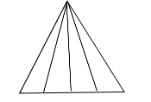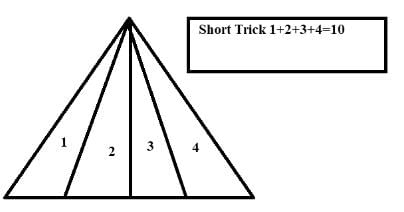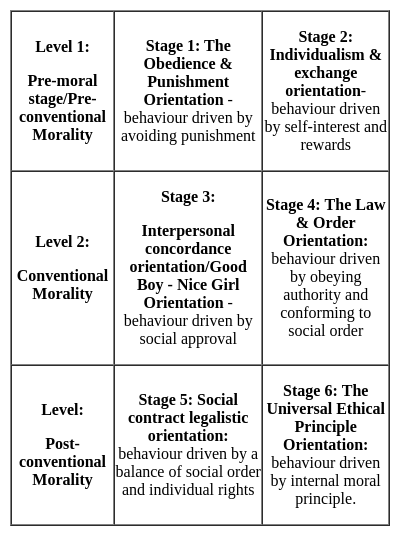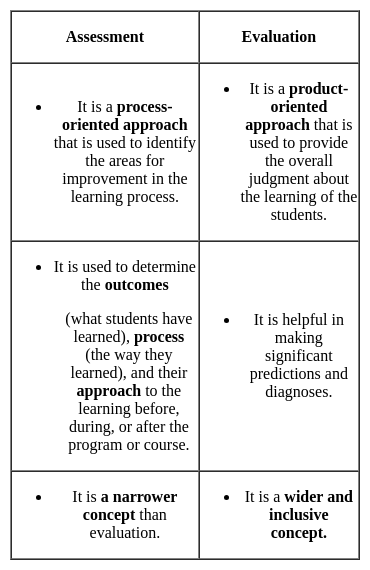DSSSB PRT Mock Test - 2 - DSSSB TGT/PGT/PRT MCQ
30 Questions MCQ Test DSSSB PRT Mock Test Series 2025 - DSSSB PRT Mock Test - 2
Which of the following books have been written by Abul Fazal?
Which atmospheric layer contains the Ozonosphere, characterized by the presence of ozone?
Who has been recently elected as the Chairman of the Senate, the upper house of the Pakistani Parliament?
What is the average of all the composite numbers between 11 and 30?
There are 17 persons in a group. The average age of 16 persons among them is 60.50 years and the age of 17th person is 8 years more than the average age of all the 17 persons. What is the age of the 17th person?
While working with 100% of his efficiency a man can complete a work in 20 days. In how many days can he complete the work while working with 25% efficiency?
A pedestrian and a cyclist start simultaneously towards each other from Aurangabad and Paithanwhich are 40 km apart and meet 2 hours after the start. Then they resumed their trips and thecyclist arrives at Aurangabad 7 hours 30 minutes earlier than the pedestrian arrives at Paithan.Which of these could be the speed of the pedestrian?
The metro service has a train going from Mumbai to Pune and Pune to Mumbai every hour, thefirst one at 6 a.m. The trip from one city to other takes 4*1/2hours, and all trains travel at the samespeed. How many trains will you pass while going from Mumbai to Pune if you start at 12 noon?
Select the correct option in order to complete the analogy.
Flower : Bud :: Plant : ?
Choose the correct meaning of the given proverb/idiom.
To make clean breast of
Directions: Read the passage and answer the question based on it.
Until relatively recently, Shakespeare's contact with the scientific world has gone largely unnoticed among both scholars and general audiences. Perhaps Shakespeare scholars and audiences don't notice the way he takes up science because they are unfamiliar with much of the science he was exposed to, while most scientists don't see Shakespeare as valuable for reflecting on science because they assume he was unfamiliar with it. Usually, even when readers are made aware of Shakespeare's references to this or that scientific subject - perhaps Hamlet's reference to infinity or Lear's allusions to atomism - these are treated as little more than interesting artefacts, window-dressing to Shakespeare's broader human concerns.
A small but growing number of scholars are now taking up the connection between Shakespeare and science. And, spurred perhaps by science fiction, by the ways that science factors in the works of key late-modern writers such as Nabokov, Pynchon, and Wallace, and by the rise of scientific themes in contemporary literary fiction, a growing number of readers are aware that writers can and do take up science, and many are interested in what they do with it.
When we familiarise ourselves with the history of science, we see the imaginative worlds Shakespeare creates to demonstrate science's power to shape our self-understanding, and the power of the literary arts to shape our response to science. We also see that Shakespeare was remarkably prescient about the questions that science would raise for our lives. He explores, for example, how we are personally affected by the uncertainties that cosmological science can introduce, or what it means when scientists claim that our first-hand experience is illusory, or how we respond when science probes into matters of the heart.
Shakespeare takes up references to the morbid art, and to other new discoveries, to show that when scientific investigations yield new ideas about nature, what ensues is an altered relation to ourselves. In fact, Shakespeare explores the philosophical, psychological, and cultural impact of many more scientific fields besides human anatomy, reflecting poetically on theories about germs, atoms, matter, falling bodies, planetary motion, heliocentrism, alchemy, the humours, algebra, Arabic numerals, Pythagorean geometry, the number zero, and the infinite. The inquiries that drove Renaissance science, and the universe it disclosed, are deeply integrated into Shakespeare's poetic worlds.
By the example of his own plays, Shakespeare suggests that one of the poet's most important tasks in an age dominated by science is to survey the full extent of science's power to shape our minds and souls, and then to turn to the poetic imagination in response. He introduces us to new scientific ways of thinking and encourages us to reflect upon the uncertainties and paradoxes that science presents to us. And he shows us how to create the language and poetic ideas that might help us to counteract science's reductionist tendencies.
Yet Shakespeare does so without dismissing the validity of science; instead, he seeks to understand it. Far from creating a bifurcation by which science and poetry are in separate domains, he embraces the world of science and creates poetic worlds that reflect deeply and philosophically on scientific insights and their human implications, recognising that science will become deeply enmeshed in our lives. For Shakespeare, poetry has the power to help us to live with the revelations of science, and so science must make way for poetry.
Q. The passage is primarily concerned with which of the following?
Directions: Read the passage and answer the question based on it.
Until relatively recently, Shakespeare's contact with the scientific world has gone largely unnoticed among both scholars and general audiences. Perhaps Shakespeare scholars and audiences don't notice the way he takes up science because they are unfamiliar with much of the science he was exposed to, while most scientists don't see Shakespeare as valuable for reflecting on science because they assume he was unfamiliar with it. Usually, even when readers are made aware of Shakespeare's references to this or that scientific subject - perhaps Hamlet's reference to infinity or Lear's allusions to atomism - these are treated as little more than interesting artefacts, window-dressing to Shakespeare's broader human concerns.
A small but growing number of scholars are now taking up the connection between Shakespeare and science. And, spurred perhaps by science fiction, by the ways that science factors in the works of key late-modern writers such as Nabokov, Pynchon, and Wallace, and by the rise of scientific themes in contemporary literary fiction, a growing number of readers are aware that writers can and do take up science, and many are interested in what they do with it.
When we familiarise ourselves with the history of science, we see the imaginative worlds Shakespeare creates to demonstrate science's power to shape our self-understanding, and the power of the literary arts to shape our response to science. We also see that Shakespeare was remarkably prescient about the questions that science would raise for our lives. He explores, for example, how we are personally affected by the uncertainties that cosmological science can introduce, or what it means when scientists claim that our first-hand experience is illusory, or how we respond when science probes into matters of the heart.
Shakespeare takes up references to the morbid art, and to other new discoveries, to show that when scientific investigations yield new ideas about nature, what ensues is an altered relation to ourselves. In fact, Shakespeare explores the philosophical, psychological, and cultural impact of many more scientific fields besides human anatomy, reflecting poetically on theories about germs, atoms, matter, falling bodies, planetary motion, heliocentrism, alchemy, the humours, algebra, Arabic numerals, Pythagorean geometry, the number zero, and the infinite. The inquiries that drove Renaissance science, and the universe it disclosed, are deeply integrated into Shakespeare's poetic worlds.
By the example of his own plays, Shakespeare suggests that one of the poet's most important tasks in an age dominated by science is to survey the full extent of science's power to shape our minds and souls, and then to turn to the poetic imagination in response. He introduces us to new scientific ways of thinking and encourages us to reflect upon the uncertainties and paradoxes that science presents to us. And he shows us how to create the language and poetic ideas that might help us to counteract science's reductionist tendencies.
Yet Shakespeare does so without dismissing the validity of science; instead, he seeks to understand it. Far from creating a bifurcation by which science and poetry are in separate domains, he embraces the world of science and creates poetic worlds that reflect deeply and philosophically on scientific insights and their human implications, recognising that science will become deeply enmeshed in our lives. For Shakespeare, poetry has the power to help us to live with the revelations of science, and so science must make way for poetry.
Q. What is the author's opinion about Shakespeare's attitude towards Renaissance science?
What is the psycho-motor domain?
I. The domain of learning that involves physical movement and coordination
II. The domain of learning that involves emotional development
Which of the following can be classified as visually impaired?
I. Children with poor vision.
II. Such children who can see light but cannot see shapes.
Which of the following guidelines must a teacher follow for using the Cooperative learning method in the classroom?
I. Groups’ composition should be heterogeneous by mixing students considering their academic achievement, sex, and race
II. Grade individual students’ s contributions
III. Collaborative social skills must be taught, modelled and reinforced regularly
Which of the following set exemplify a social constructivist approach to facilitate reading among students?
(i) Salma uses flashcards to help students learn new words and rewards them with candy for correct responses.
(ii) Pramati has her students choose from a variety of books to read. Those students who read a particular book are made to discuss the book on a regular basis.
(iii) Arundhati emphasizes the importance of using contextual material to help determine the meaning of new words.
(iv) Rekha has her students write each word they miss on a spelling test five times to help them remember the word.
I. Developing work-related skills and knowledge
II. Preparing students for their future careers
III. Encouraging entrepreneurship and innovation
IV. Promoting academic excellence in traditional subjects






















